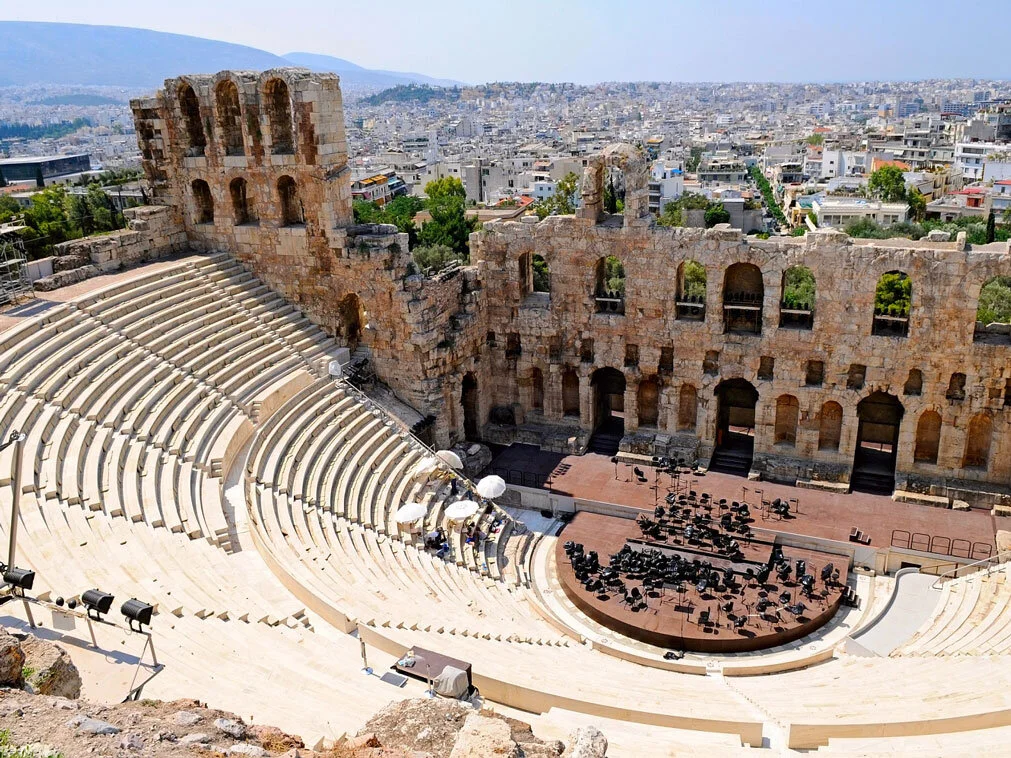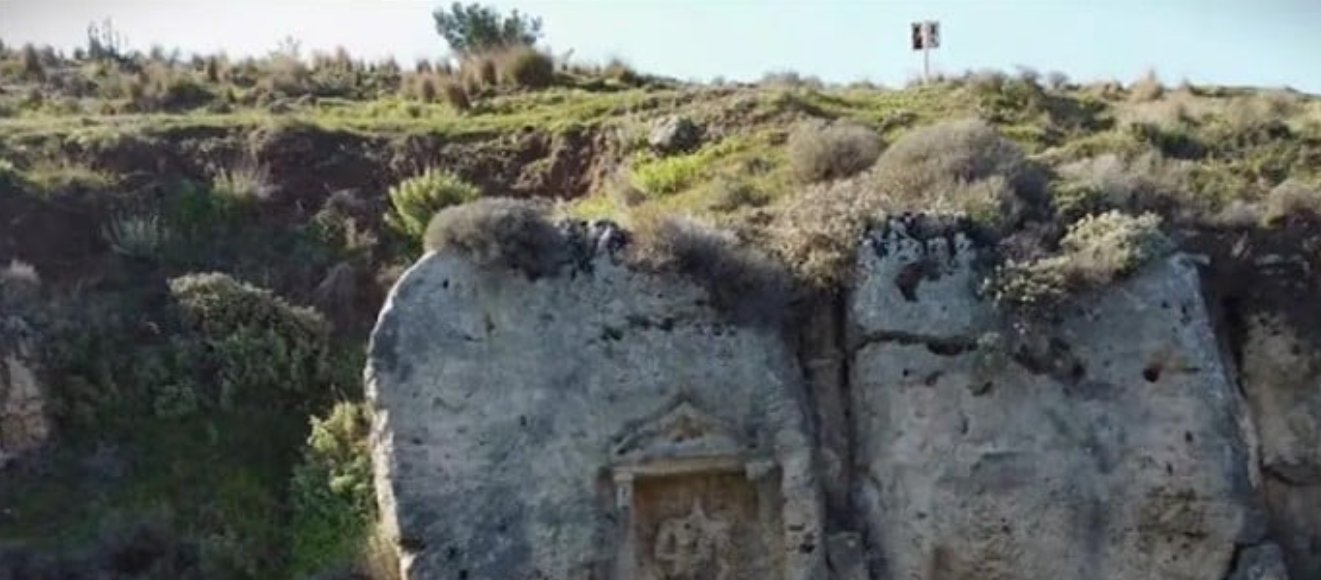Tourists and the student youth of Greece are compelled to pass through an ancient theater, not only to admire its majestic simplicity but also to come in contact with its famous acoustics, the most perfect, the most extraordinary, the most perfect and the best ever created by man.
Everyone stands somewhere in the back row, closes their eyes and tries to concentrate on the sounds of the scene, that is, where the guide tosses a coin.
In early 2013, in a scientific review paper was written that various research groups, using state-of-the-art acoustic measurement technology, concluded that Epidaurus, the actual source for the acoustic design of all subsequent large auditoriums, had perfect acoustics.
It performed very well in the tests, especially in terms of speech intelligibility even in the last seats and at the furthest points from the stage. The European Acoustics Association had even told us that even measurements taken in the presence of spectators showed no significant degradation of the theater's excellent acoustics.
The European experts concluded that it was the work of the reflections of the Greek theaters that contributed to the acoustic miracle both in Epidaurus and in the other Greek amphitheaters studied. Reflections reaching the listener from the nearby surfaces of the seats and supporting the original acoustic signal.
Even the Roman Vitruvius confessed to the admirable architecture of Greek amphitheaters as early as the 1st (in his "Ten Books of Architecture"). This was the case in the 18th century, when the science of acoustics began to study sound scientifically, and especially in the late 19th century, when the science of acoustics now had Epidaurus as its greatest station in the development of the sound design.
In his famous 1975 study, Shankland was able to establish that the theaters of the ancient classical period had remarkable acoustics in terms of clarity of speech, solo or unison singing, choral singing and musical instruments.
The ancient Greeks had a secret
When he laid the final stones in his majestic theater in Epidaurus in the 4th century B.C., architect Polykleitos the Younger had no way of knowing that he had created a sophisticated acoustic filter. But when the first audience members in the back rows could hear the action on stage with great clarity, the Greeks must have realized that they had done everything right.
So right, in fact, that any attempt to imitate the masterful design of Epidaurus would never yield the same results! The studies of both Greek researchers and foreign academics tell us that the legendary sound of ancient theaters that we admire today was ensured not only by the design of the amphitheater but also by some tricks of ancient Greeks.
Such as the echoing vessels that were located under the stairs of the cavity, which the archeological excavation in the ancient theater of Dion brought to light. These vessels were strategically placed in niches under the stairs of the cavity, according to mathematical formulas, in order to amplify the resonance of certain sounds. In other words, they functioned like real loudspeakers.
The actors' voices were tuned to the vessels and became extremely loud. But the whole design of the theater had a lot of mathematics in it, a legacy of the Pythagoreans in architecture that incorporated the harmonic theories of Pythagoras' students.
Greek theaters adopted other soundproofing techniques, as well as methods of amplifying the voice with strategic sound reflections on the theater itself. Thus, the natural attenuations of the sound were supplemented and it reached the highest seats of the theater. In short, the reflections from the orchestra and the stage covered the entire theater, so that no audience member could complain.
Even the masks that are worn by the actors of ancient drama significantly affected the volume of the voice. Modern research techniques have long since discovered that although the actors' speech was altered by the mask, at the same time the volume of the voice, which came from the back of the head, was amplified.
These elements appear to have existed in the theaters of our ancestors at Athens, Larissa, Argos, Mantineia, Corinth, Messina, Delphi, Rhodes, Dodoni, etc.
And yet one can hear the coin
Acoustics researchers from the Technical University of Georgia, USA, have suggested that the wonder of Greek acoustics was largely due to the arrangement of positions. These rows of stones form a very effective acoustic filter, they say, cutting off low-frequency ambient noise, such as the hum of the crowd, and reflecting the high-frequency voices of the stage actors.
This natural sound design allowed human voices to travel unimpeded to the higher seats, the researchers report in their paper published in the Journal of the Acoustics Society of America, using advanced acoustic and ultrasonic techniques.
And while many previously suspected that the arrangement of the seats had much to do with the acoustics of Epidaurus, this is the first time such a thing has been scientifically proven and experimentally reproduced. American scientists even say that the other elements (such as masks and vases) undoubtedly played a reinforcing role, but it was mainly the stone seats that performed the miracle.
So it wasn't that they built their theaters downwind (from the stage to the audience), as was previously believed, but the reflection of sound of the folded surfaces of Epidaurus that were responsible for the clear sound. The low-frequency murmurs of the audience were thus cut into the theater's construction filters, while at the same time decisively improving the audibility of the actors' voices. So simple, so intelligent, say the two researchers.
The acoustics were good, but nothing extraordinary
The whole cult of Epidaurus acoustics is not justified at all, say Dutch researchers from the Eindhoven University of Technology. Their team analyzed the acoustics of three Greek theaters with more than 10,000 measurements and found that the actor in the upper seats could actually be heard as long as he spoke loudly. However, a whisper, a coin, the lighting of the match, or the tearing of the paper only reach half of the theatre, they conclude, rejecting the legendary acoustics.
The Dutch analyzed the ancient theaters of Epidaurus, Argos, and Herod of Attica using their own pioneering laboratory method of simultaneous analysis over wireless speakers and concluded that these subtle sounds, such as coin or paper, could be heard throughout the theater, but were recognized only as far as its center. And the whispering of the actors would only be heard from the privileged front seats.
Only when the actors spoke loudly and clearly could they be heard by the artificial ears of the researchers in the upper seats. And that was in all three theaters. And so they concluded that the acoustic quality in the theaters was good, but by no means remarkable. The Hellenic Institute of Acoustics responded to the Dutch researchers, calling it an "attempt to impress", although they replied that they were not seeking a "quick reputation" and noted that the acoustics of the three theaters they studied had never been studied in such detail.
"The fact that we were able to take so many measurements is thanks to new, faster and more accurate measurement techniques that were not available in previous studies. This allowed us to reach conclusions that previous studies could not find. The measurements were carried out in Greece in the spring of 2015 ", replied the Dutchman.
Apart from the scientific controversy on both sides, Armand D'Angour, an associate professor of classical studies at Oxford University, said the obvious: "The new research is based on a theater that has changed over the centuries," and so we can not be at all sure that today the sounds are heard exactly as they were then ".
He also pointed out that the ancient Greeks used various artificial and imaginative ways to amplify sounds, something that is not considered in the study of Eindhoven University.
And indeed, as the Dutch themselves admit, conditions would have been very different 2,000 years ago. We now lack the vessels and other tricks of the Greeks to amplify the voices and sounds of the stage, which once enchanted ancient literature and spoke of a miracle of acoustics.
The surfaces of the theaters were also different, shiny and radiant, as we know ancient Greeks regularly cared for the marble of Epidaurus. However, everyone admits that those who built these theaters knew very well what they were doing, even without the science of acoustics guiding their innovative steps.













